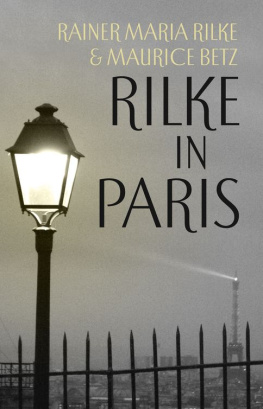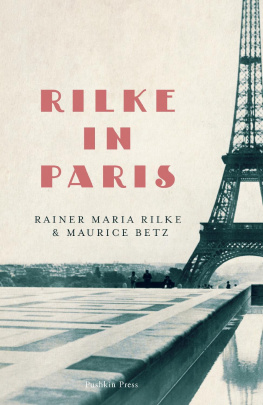THIS IS A BORZOI BOOK
PUBLISHED BY ALFRED A. KNOPF, INC.
Copyright 1999 by Nicholas Fox Weber
All rights reserved under International and Pan-American Copyright Conventions. Published in the United States by Alfred A. Knopf, Inc., New York, and simultaneously in Canada by Random House of Canada Limited, Toronto. Distributed by Random House, Inc., New York.
www.randomhouse.com
Knopf, Borzoi Books, and the colophon are registered trademarks of Random House, Inc.
Owing to limitations of space, all permissions to reprint previously published material may be found immediately following the index.
Library of Congress Cataloging-in-Publication Data
Weber, Nicholas Fox.
Balthus : a biography / Nicholas Fox Weber. 1st ed.
p. cm.
Includes bibliographical references and index.
eBook ISBN: 9780385352765
1. Balthus, 1908 2. PaintersFrance Biography. I. Title.
ND 553. B 23 W 43 1999
760.092dc21
[ B ] 99-28422
v3.1
For the two sisters,
Charlotte and Lucy
CONTENTS
CHAPTER ONE
A BIRTHDAY
I treated art as the supreme reality and life as a mere mode of fiction.
O SCAR W ILDE
I
W HEN B ALTHAZAR K LOSSOWSKI turned six, he had a large birthday party in his familys apartment in Paris. Birthdays were a funny business for Baltuszas everyone called him. Since he had been born on February 29 in 1908, his family did not know precisely when to celebrate except on leap years. Nonetheless, as the boy anticipated his friends arrival, he was in high spirits. He had a plan.
It was a cozy home full of art and booksin a building on the Rue Boissonade, near the Boulevard Montparnasse in the fourteenth arrondissement. Baltuszs parents were both painters, his father an art historian as well, and along with Baladines winsome watercolors and Erichs vigorous oils hung canvases by Czanne and Delacroix, as well as a Gricault drawing and Japanese woodcuts. Baltuszs little friends entered dressed in their finery, in his eyes all very beautiful with their white lace collars.
Once the nurses and governesses left the children on their own, the birthday boy took charge. Addressing the other youngsters, Baltusz announced that the time had come for them to eat badly. There was a chocolate cake, and they all plunged in. Everyone got his collars and cuffs filthy with frosting. Everyone except for Baltusz, who remained spotless. When the nurses and governesses returned, all the other children were chastised or slapped, while Baltusz escaped punishment.
The story was told to me a lifetime later by the eighty-two-year-old Balthusthe Count de Rolain the sitting room of his vast eighteenth-century chalet in a small French-speaking village in the Alps. Its part of my bad side, he explained, referring to the way he had trapped others into temptation while keeping himself clean.
A very naughty boy, and until now he has never changed, laughed his forty-eight-year-old Japanese-born wife, Setsuko, who had encouraged him to tell me the tale.
I had met both of them for the first time that afternoon. Balthuss reputation was that he loathed writers on art and would not grant interviews. In an era when many successful artists preen like movie stars, he has managed to give the impression that he prefers to live in isolation, as if the occasions when he has been quoted or photographed are accidental slips. In 1977, at the time of a rare Balthus show in New Yorkthe first in a decade and that there were no anecdotes about him in circulation, thanks to his own careful control. I had scant hope that he would alter his reclusive pose for me.
John Russell had begun his introduction to the catalog of the 1968 Balthus retrospective at the Tate Gallery with the statement, What is private must remain so: that is Balthus attitude, and it is at his insistence that this catalog contains no biographical matter. The best way to begin, he said when apprised of our customs, is to say: Balthus is a painter of whom nothing is known. And now let us have a look at the paintings. That statement, often cited since, has become the gospel on the artist. It is especially provocative given the eroticism and deviltry and sinister overtones so many viewers see in his paintings of comatose teenagers and seemingly spent naked women.
When his major retrospective opened in Paris at the Centre Pompidou in 1983, critics in search of a lead on the work from Balthus himself could do no better than to fall back on his 1945 pronouncement, I refuse to confide and dont like it when people write about art. The exhibition catalog, although rendered heavier than the combined volumes of the Paris phone book by its many essays and reproductions, presented no straightforward biographical data. It was pointed out that the largest book on Balthus, done with his cooperation, did not even provide his birth date. And the people in Balthuss constellation acted as if they had signed a secrecy oath. To a journalist from Le Monde, the artists son Thade declared politely that he would not speak about his father because his father did not want people to; moreover, he shared Balthuss view that to talk about painters was not to talk about paintings. Pierre Klossowski, the artists brother, himself a famous writer and leading intellectual figureknown for his lifelong devotion to the work of the Marquis de Sadeexplained that to discuss Balthus would give him migraines.
But Balthus had readily acceded to my request that I come see him about the book I wished to write about him. On that first occasion, as we sat side by side on an eighteenth-century sofa, he was gracious and compliant, answering all of my questions and offering numerous anecdotes. Although he had forbidden my turning on a tape recorder, he had sanctioned my use of notebook and pen, and voiced no objection to my writing continuously. The story of his sixth birthday party, told with a great grin on his face, seemed, however, clearly a warning. Balthus could manage to get everyone else in trouble while keeping only himself above the fray, and he delighted in doing so.
II
I INITIALLY B ALTHUS FAILED to answer the letter I sent him from Connecticut saying I had been asked to write a book on him and would like to meet him. So, having learned his phone number from Swiss informationit was listed under KlossowskiI steeled up the nerve to dial it early one morning about a month before that first visit in 1990. When someone with a gravelly yet tremulous voice answered the phone in slow and refined cadence, I asked, in my best high-school French, Est-ce que je peux parler avec le Comte de Rola?
Cest lui-mme! the voice bellowed back authoritatively.
From then on, this man of such terrifying reputation, so ferocious in his portrait photos, was the height of graciousness. First he suggested that we switch to English. This, he offered, was his first language; he was one-quarter Scottish, he told me, and as a child had had a Scottish nanny. He said that I might call on him, as if it were a matter of course. Solicitous about my travel plans, he scheduled a Monday morning three weeks hence that suited me well. The count gave me meticulous instructions on how to change to the small mountain train in Lausanne. He wondered if I knew his part of Switzerland, and seemed particularly pleased when I said that when I was in college I had dated a girl in Gstaad, only half an hour away; like a concerned older relative, he asked me her family name. He did not know these people, but when I explained that they could hardly ever use their large Gstaad chalet anymore because they now had to spend over half their time in another canton for tax purposes, he chuckled knowingly.













